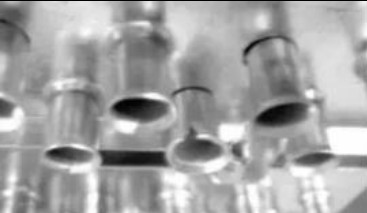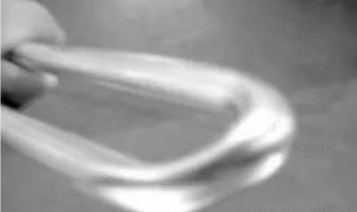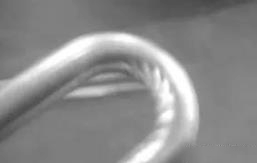Air Conditioning Copper Pipe and Its Performance Characteristics
The first type of air conditioning copper pipe and its performance characteristics: soft copper pipe and hard copper pipe Soft copper pipe, also known as flexible copper pipe, is the copper pipe after annealing treatment to enhance its flexibility. This type of copper pipe is easy to bend and form by hand, and is suitable for situations that require complex wiring, such as residential water supply pipes or HVAC systems. Hard copper pipes, with thicker walls, are suitable for environments with higher pressures and temperatures are commonly used in main water supply, gas lines and industrial applications.
The second category:1, Oxygen-free copper: including high purity oxygen-free copper (TU0, TU1, TU2) and phosphorus deoxidized copper (TUP, TP1, TP2, etc.) characterized by very little oxygen content, a small amount of deoxidizing agent remains in deoxidized copper; 2, aerobic copper: mainly ordinary pure copper (T1, T2, T3, etc.) and tough copper, characterized by high oxygen content; 3, special copper: arsenic copper, silver copper, tellurium copper, etc., is characterized by adding different trace alloying elements, in order to achieve the purpose of improving the comprehensive performance of the material.
Characteristics and uses of copper pipe materials for air conditioning:
| group | Main characteristics | purpose |
| Pure copper (T1, T2, T3) | Has good conductivity, thermal conductivity, corrosion resistance, and processability, and can be welded and brazed. Trace amounts of oxygen have little effect on conductivity, thermal conductivity, and processability, but they can easily cause "hydrogen sickness" and are not suitable for processing (annealing, welding, etc.) and use in high-temperature (such as 370 ℃) reducing atmospheres. | Used as conductive, heat-conducting, and corrosion- resistant equipment. T1 and T2 are used as wires, cables, conductive screws, blasting detonators, chemical evaporators, storage containers, and various pipelines. T3 is used as a general copper material.Such as electrical switches, rivets, nozzles, oil pipes, and other pipelines. |
| Oxygen free copper (TU1, TU2) | High purity, excellent conductivity and thermal conductivity, with no or very few "hydrogen diseases"; Good processing performance, welding, corrosion resistance, and cold resistance. | Mainly used as a component for electric vacuum instruments. |
| Phosphorus oxygen copper removal (TP1, TP2) | Good welding performance and cold bending performance, generally without a tendency towards " hydrogen sickness", can be processed and used in a reducing atmosphere, but should not be processed or used in an oxidizing atmosphere. TP1 has less phosphorus residue than TP2, so its conductivity and thermal conductivity are higher than TP2. | Mainly used for pipe applications, it can also be supplied in sheet, strip, rod, or wire. It is used as a gasoline or gas delivery pipe, drainage pipe, condenser pipe, mine pipe, evaporator, heat exchanger, andtrain carriage parts |
| Silver copper (TAg0.1) | Adding a small amount of silver to copper can significantly increase the softening temperature (recrystallization temperature) and creep strength, while rarely reducing the conductivity, thermal conductivity, and plasticity of copper. Practical silver copper is generally strengthened by cold work hardening. It has good wear resistance, electrical contact, and corrosion resistance, and its practical life is 2-4 times longer than that of ordinary hard copper when made into electric wire. | Used as heat-resistant and conductive equipment. Such as motor rectifier blades, conductors for generator rotors, spot welding electrodes, communication wires, leads, wires, electronic tube materials, etc. |
In the design of air conditioning copper pipe it is very important to consider the calculation of the wall thicknessof copper pipe. The calculation of copper pipe wall thickness involvesthe outer diameter, inner diameter and wall thickness of the pipe. Thespecific calculation formula can be determined by engineering principlesand the physical characteristics of copper pipes. For example, Barlow'sformula can be used to calculate the wall thickness. This formula takes into account the pipe's outside diameter, working pressure, material strength, and safety factor.
The basic form of Barlow's formula is: where t is the wall thickness ofthe copper pipe, P is the working pressure, D is the outside diameter, S is the yield strength of the material, and SF is the safety factor. The calculation formula based on the relationship of Japanese freeze security rules is: t= [(P×oD)/(2σa + 0.8P)] +α (㎜)t:required wall thickness (㎜); P: maximum used pressure (design pressure) (MPa); oD: standard outside diameter (㎜); σa: basic allowable stress at 125 °C (N / ㎜ 2), σa = 33 (N / ㎜ 2); α : corrosion thickness (㎜) However, for copper pipe it is 0(㎜).
In addition, for the specific application of air conditioning copper pipe, you can refer to the ASTM B280 standard, which provides the relevant provisions of the size and working pressure of copper pipe used in the field of air conditioning and refrigeration. According to these regulations, the designer can determine the wall thickness of the copper pipe suitable for the specific application. Regarding the selection parameters and allowable values of copper tubes for refrigerant distribution pipes, it is usually necessary to consider the type of refrigerant, system design and operation. For example, the performance of different coolants at different temperatures and pressures will affect the size and wall thickness selection of copper pipes. These selection parameters must meet specific standards (such as ASTM B280) to ensure the safe and efficient operation of the system. Specific information and standards on the calculation formula for the wall thickness of coppertubes, as well as the selection parameters and allowable values of copper tubes for refrigerant distribution pipes, Can refer to Engineering Toolbox ASTM B280 Copper Tube for Air Conditioning and Refrigeration (ACR)
Dimensions and Working Pressures as well as Table 14.2e. Dimensions and Physical Characteristics of Copper Tube, Copper.org. These resources provide detailed dimensions, physical characteristics, and working pressure information to aid in the proper selection and calculation of copper tubes for use in air conditioning systems. In addition, according to the Chinese national standard (e.g. GB/T 17791-2017), the wall thickness calculation of copper pipes also needs to take into account the application scenario and pressure requirements. In the Chinese national standard GB/T 17791-2017, there are detailed regulations on the wall thickness of copper pipes for different types and purposes. These standards ensure that copper pipes can work safely and efficiently under various pressure and temperature conditions.
Third, the selection parameters and allowable values of refrigerant piping copper pipe selection of refrigerant piping copper pipe need to consider a variety of factors, including the size, type, wall thickness and working pressure of copper pipe. For example, the ASTM B280 standard specifies the size and working pressure of copper pipes in the field of air conditioning and refrigeration. Copper tubing should be selected to meet the specific requirements of the refrigeration system, including refrigerant type, system capacity, and design pressure.
1. Chinese standards: National standards such as GB/T 17791-2017 provide detailed guidance for the selection of copper pipes for refrigerant distribution pipes. These standards include specific requirements for the size of copper tubes required for different types of refrigerant systems (such as R22, R410A, R32, etc.), as well as the maximum allowable working pressure and temperature. By combining specific engineering requirements with applicable Chinese national standards, it is possible to ensure that the selection of copper pipes meets the performance and safety requirements of the system. For example, it may be pointed out in the standard how to select the appropriate copper tube size and wall thickness according to the refrigerant type and system design under certain working conditions, and how to ensure that these parameters operate within a safe range. 2. European standards: In Europe, Copper pipes and pipes are classified according to EN 1057 as "Type XCopper Pipe", "Type Y Copper Pipe", and "Type Z Copper Pipe" ; In Australia, they are classified as "Type A", "Type B", "Type C", and "Type D". These different types of copper pipes are divided into soft and hard copper pipes according to their stiffness. Soft copper pipes cost more due to annealing heat treatment, but are easy to install and maintain, and are suitable for applications that require careful wiring, such as household water supply pipes or HVAC systems. Hard copper pipes have thicker walls that can withstand higher pressures and temperatures, and are commonly used in main water supply, gas lines, and industrial applications. 3, general refrigerant distribution pipe copper pipe selection parameters and allowable value O and OL material (TP2M type, also known as coil)1/2H or H material (TP2 type, also known as straight pipe)
| category | Standard outer diameter (allowable tolerance) DOmm | Wall thickness (Tolerance allowed)t mm | Allowable tolerance for true roundnessmm | Category (Design Pressure) | Reference value | |
| maximum working pressure PMPa | Allow tensile stressO aN/mm² | |||||
| O and OL | 3.17(±0.03) | 0.70(±0.06) | | The third type | 17.701 | 33(Allowable tensile stress at a temperature of 125 ℃) |
| 4.76(±0.03) | 0.70(±0.06) | 11.000 | ||||
| 6.00(±0.03) | 0.70(±0.06) | 8.492 | ||||
| 6.35(±0.03) | 0.80(±0.06) | 9.246 | ||||
| 8.00(±0.03) | 0.80(±0.06) | 7.173 | ||||
| 9.52(±0.03) | 0.80(±0.06) | 5.945 | ||||
| 10.00(±0.03) | 0.80(±0.06) | 5.641 | ||||
| 12.70(±0.03) | 0.80(±0.06) | The second type | 4.378 | |||
| 15.88(±0.03) | 1.00(±0.09) | 4.376 | ||||
| 19.05(±0.03) | 1.00(±0.09) | Type 1 | 3.616 | |||
| 22.22(±0.03) | 1.15(±0.09) | 3.563 | ||||
| 25.40(±0.04) | 1.30(±0.09) | 3.522 | ||||
| 28.58(±0.04) | 1.45(±0.10) | 3.490 | ||||
| 31.75(±0.04) | 1.60(±0.10) | 3.465 | ||||
| 34.92(±0.04) | 1.75(±0.10) | 3.445 | ||||
| 38.10(±0.05) | 1.90(±0.10) | 3.428 | ||||
| 41.28(±0.05) | 2.10(±0.13) | 3.500 | ||||
| 44.45(±0.05) | 2.25(±0.13) | 3.481 | ||||
| 50.80(±0.05) | 2.55(±0.18) | 3.455 | ||||
| 53.98(±0.05) | 2.75(±0.18) | 3.505 | ||||
| category | Standard outer diameter (allowable tolerance)DOmm | Wall thickness (Tolerance allowed) t mm | Allowable tolerance for true roundness mm | Category (Design Pressure) | Reference value | |
| maximum working pressure PMPa | Allow tensile stress O aN/mm² | |||||
| 1/2H or H- material | 3.17(土0.03) | 0.70(±0.06) | Below 0.03 | The third type | 32.720 | 61(Allowable tensile stress at a temperature of 125℃) |
| 4.76(±0.03) | 0.70(±0.06) | Below 0.04 | 20.528 | |||
| 6.00(±0.03) | 0.70(±0.06) | Below 0.05 | 15.698 | |||
| 6.35(±0.03) | 0.80(±0.06) | Below 0.05 | 17.092 | |||
| 8.00(±0.03) | 0.80(±0.06) | Below 0.07 | 13.260 | |||
| 9.52(±0.03) | 0.80(±0.06) | Below 0.08 | 10.990 | |||
| 10.00(±0.03) | 0.80(±0.06) | Below 0.08 | 10.427 | |||
| 12.70(±0.03) | 0.80(±0.06) | Below 0.11 | 8.092 | |||
| 15.88(±0.03) | 1.00(±0.09) | Below 0.13 | 8.090 | |||
| 19.05(土0.03) | 1.00(±0.09) | Below 0.16 | 6.684 | |||
| 22.22(±0.03) | 1.00(±0.09) | Below 0.23 | 5.694 | |||
| 25.40(±0.04) | 1.00(±0.09) | Below 0.26 | 4.959 | |||
| 28.58(±0.04) | 1.00(±0.09) | Below 0.29 | The second type | 4.391 | ||
| 31.75(±0.04) | 1.10(±0.09) | Below 0.32 | 4.347 | |||
| 34.92(±0.04) | 1.10(±0.09) | Below 0.35 | Type 1 | 3.942 | ||
| 38.10(±0.05) | 1.15(±0.09) | Below 0.39 | 3.773 | |||
| 41.28(土0.05) | 1.20(±0.09) | Below 0.42 | 3.630 | |||
| 44.45(±0.05) | 1.25(±0.09) | Below 0.45 | 3.509 | |||
| 50.80(±0.05) | 1.40(±0.13) | Below 0.51 | 3.434 | |||
| 53.98(±0.05) | 1.50(±0.15) | Below 0.54 | 3.467 | |||
| 63.50(±0.05) | 1.75(±0.15) | Below 0.64 | 3.438 | |||
| 66.68(±0.05) | 1.85(±0.15) | Below 0.67 | 3.461 | |||
| 76.20(±0.05) | 2.10(±0.18) | Below 0.77 | 3.438 | |||
| 79.38(±0.05) | 2.20(±0.18) | Below 0.80 | 3.457 | |||
Fourth, what are the problems in the use of air conditioning copper pipe?How to solve it? 1, copper pipe leakage: copper pipe leakage is the fatal defect of air conditioning, once the leakage of air conditioning refrigerant will all overflow, air conditioning due to the lack of heat transfer medium, and make the air conditioner failure. For the leakage problem of copper pipe is more complex, the following often appear in the leakage reasons are elaborated.
(1) Manufacturing reasons: ① eddy current detection leakage. GB specifies that the copper pipe must be 100% eddy current detection, and specifies the diameter of the artificial defect (through hole) on the sample tube used for checking the flaw detector, in order to ensure the sensitivity of eddy current detection and prevent excessive defect detection. This requirement can be fully guaranteed in the regular large-scale copper pipe factory, because the flaw detection is online testing, this online eddy current testing ensures that all the lengths of the pipe have been tested by eddy current testing, and it is 100% flaw detection. Some copper pipe factories are not like this, or do not go through eddy current testing, or use low-standard eddy current flaw detector sampling. In this way, the copper pipe has exceeded the defect detection or not detected, resulting in air conditioning leakage when the user is using; ② eddy current testing detected defects, but the surface of the copper pipe was not marked or marked inaccurate and unclear. In the production process of copper pipe, the defects detected by eddy current testing require ink to cover the defects exceeding the standard, so that the user can remove the defective copper pipe in the process of use. However, due to the manufacturer in the production process of the selection of ink adhesion is not enough, ink-jet gun adjustment is not appropriate, drying is not complete, ink composition encountered high temperature fading and other reasons, resulting in the user in the use of the process can not be eddy current detection of the defects picked out, once the defective copper pipe used in the air conditioner is bound to cause leakage. (2) Reasons for user use: ① Misuse of the defect pipe detected by eddy current detection. Under normal copper pipe production conditions, the eddy current detection of copper pipe not only marks the number of damage points on each coil, but also paints black marks on the parts of the damage points, so that users can identify and pick out this "black tube" in use. Air conditioning and refrigeration enterprises should make it clear to the operators, especially the newly posted workers, in order to prevent this pipe with injuries from being installed on the air conditioning and refrigeration device. We have found this problem many times when we have in-depth user service, some workers ask us how the black on the pipe is going on, and some are anatomizing unqualified products precisely because the "black tube" is installed on the product causing
air conditioning refrigeration device leakage. ② Processing problems. In the process of forming two units , the air conditioning supervisor must go through the process of bending, expanding, flaring, welding and other links. ③ Leakage caused by poor welding. After the copper pipe is pierced into the aluminum foil with holes, the pipe and the pipe to be connected, need to use a small elbow connection, in order to connect firmly, in the production process, the small elbow and the copper pipe welded together, welding methods are divided into manual and automatic two kinds, welding due to the quality of solder, copper pipe expansion, welding surface has foreign bodies and other reasons, resulting in welding is not real, forming virtual welding, Resulting in refrigerant leakage. 2, copper pipe cracking: the cracking of copper pipe is mainly concentrated in the copper pipe expansion and expansion process. The cracking situation is shown in Figure 1. In the production of two units, copper pipe expansion and flaring is a continuous process, often compounded to a process to complete. There are many reasons for the cracking of copper pipe, and the main reasons are as follows : ① The reason of the quality of copper pipe itself. The reasons for the quality of the copper pipe itself can be divided into external surface defects, internal surface scratches, internal surface oxidation and so on. Copper pipe in the expansion of the pipe, the cold processing deformation, the surface is stretched by tensile stress, when the copper pipe surface has deep scars, the copper pipe surface can not withstand the surface tensile stress, the formation of tensile fracture phenomenon, that is, we see the copper pipe surface cracking. The cracking mechanism caused by scratches on the inner surface of copper pipe is similar to the cracking mechanism caused by scratches on the outer surface. When the inner surface of the copper pipe is oxidized, the friction force on the surface of the copper pipe is different from that on the surface of the copper pipe without copper oxide when the pipe is expanded, resulting in the length of the pier of the same length of the copper pipe is inconsistent, and the copper pipe with a small pier at the time of the sparing is extended long, resulting in excessive sparing and cracking.

Figure 1: Local cracking of air conditioning copper pipe ② Reasons for user use. In the use of copper pipe, it is often the coil straightening, cutting and sizing, and thecutting is often made without chips. The surface of the copper pipe after heat treatment is relatively soft. When the chip free cutting is carried out, when the cutting knife is unfavorable or when the cutting knife is too large, the copper pipe shrink is too large or too many burrs, formingthe port flash and port hardening, causing cracking when the opening is expanded. A heat exchanger is composed of many "U" type tube, the "U" type tube length and each"U" type tube two end length of the consistency requirements are very high, when bending "U" type tube, due to equipment or adjustment reasons caused by the "U" type tube length and each "U" type tube two end length difference is too large (greater than 2mm), So when flaring, it will appear because the port is too long and the copper pipe is extended too long, causing the flaring is too large and cracking. 3, bending pipe wrinkle, fracture: copper pipe wrinkle (Figure 2, Figure 3), fracture occurs in the production of "U" type pipe process, copper pipe in this process is often scrapped more.

Figure 2: Wrinkling on the outside of air conditioning copper pipe

Figure 3: wrinkling on the inside of air conditioning copper pipe

 English
English 한국어
한국어 français
français Deutsch
Deutsch Español
Español italiano
italiano العربية
العربية